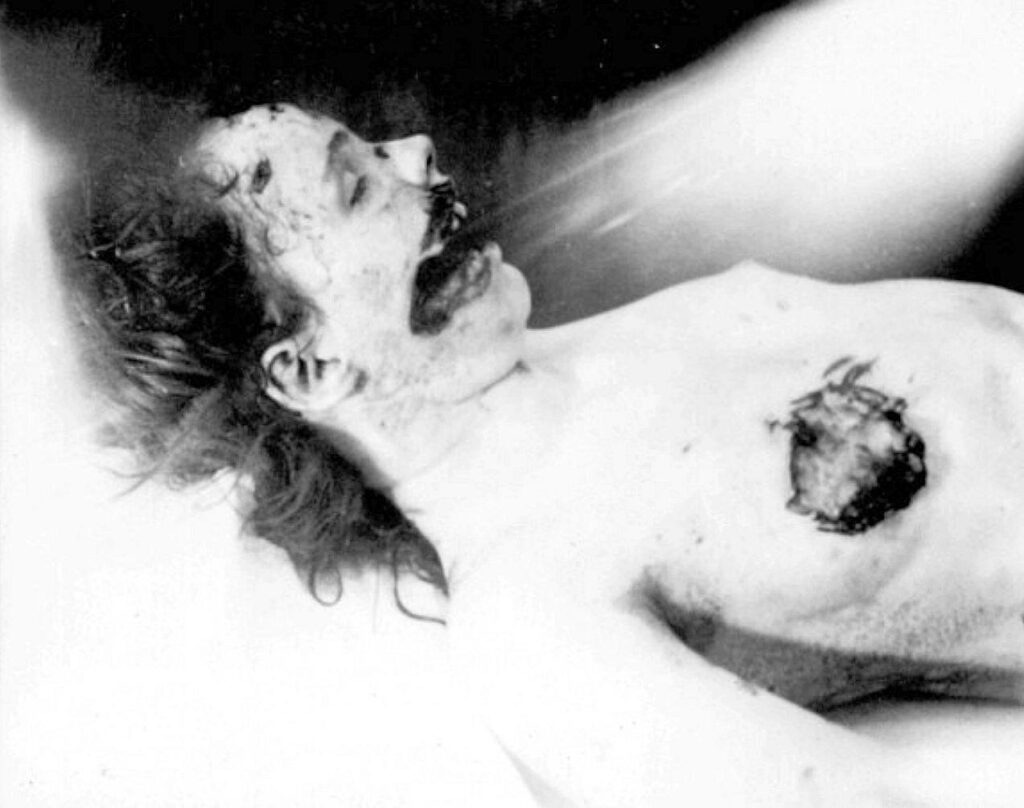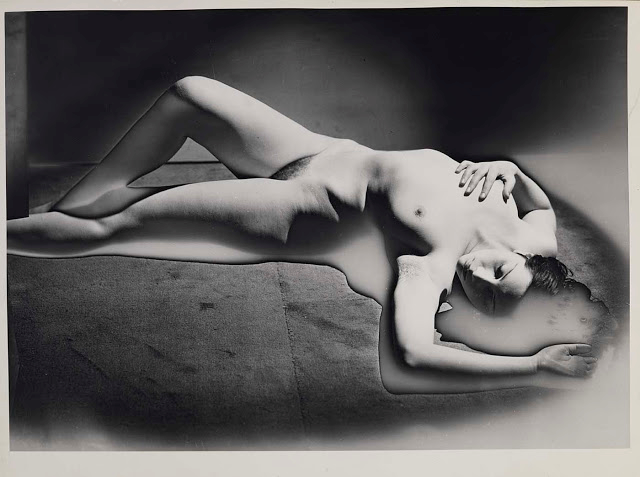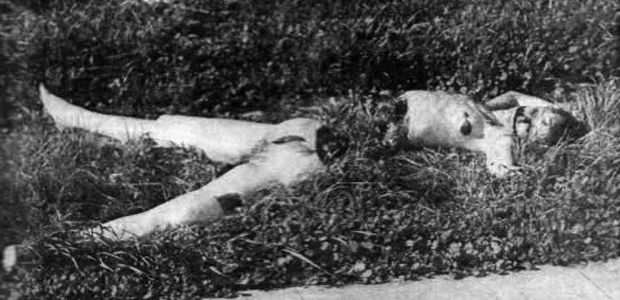The brutal 1947 unsolved murder of Elizabeth Short, known infamously as the Black Dahlia, has long been shrouded in mystery, deception, and conspiracy. Originally dubbed “The Werewolf Murder” by the press due to the savagery of the crime, her case remains unsolved, buried beneath layers of corruption and hidden truths. However, when examined through an esoteric lens, connections begin to emerge between this gruesome act, ancient ritualistic practices, and the clandestine operations of Hollywood’s elite.
Various texts from the Greco-Roman period speak of a strange cult on Mount Lykaion, in Greece, dedicated to wolves and which worshipped a form of Zeus known as Zeus Lykios – “Wolf Zeus”.
Those same texts and ancient urban legends and folklore tell us that the cult practiced human sacrifice.
His Name Is Man Ray: The Black Dahlia Killer – Randy “Rocket” Cody

Zeus Lykaios and the Arcadian Werewolf Cult
In ancient Greece, Zeus Lykaios (Λύκαιος; “Wolf-Zeus”) was worshipped in connection with the archaic festival of the Lykaia, held on the slopes of Mount Lykaion (“Wolf Mountain”) in Arcadia. This festival was deeply associated with primitive rites of passage, cannibalistic threats, and the possibility of werewolf transformation for the ephebes who partook in the rituals. According to legend, sacrifices were performed at an ancient ash-heap, near which lay a forbidden precinct where, ominously, no shadows were ever cast. The association of Zeus with the concept of lycanthropy, blood rites, and human sacrifice reveals an ancient tradition of transformation through violence, a theme eerily mirrored in the Black Dahlia case.
The New Testament states Satan is the ancient pagan Greek God Zeus.
According to Jason Urbanus, Ph.D., excavations at the Sanctuary of Zeus on Mount Lykaion have revealed the earliest evidence to date associated with the cult of ancient Greece’s most powerful Olympian god.

The top of Mount Lykaion offers sweeping views across the Peloponnese. The ancient Greeks believed the mountain was the birthplace of Zeus. Near its summit lies the Sanctuary of Zeus Lykaios.
The First Werewolf, King Lycaon of the Greek state Arcadia. The person who was transformed into a Werewolf by the King of the Greek Olympian gods, Zeus himself. This is the curse of Zeus. @AncientMysteryChannel presents video where we see how King Lycaon stirred up the wrath of Zeus by testing his omniscience; the state of knowing everything. The curse of Zeus is the price paid for questioning the ancient Greek god.
“The Pergamon Altar is a massive structure originally built in the 2nd century BC in the Ancient Greek City of Pergamon. The temple was dedicated to the greek god Zeus. The Pergamon Altar was shipped out of the Ottoman Empire from the original excavation site by the German archeological team lead by Carl Humann, and reconstructed in the Pergamon Museum in Berlin in the 19th century, where it can be seen alongside other monumental structures such as the Ishtar Gate from Babylon.”
In Greek mythology, Lycaon was a king of Arcadia who, in the most famous version of the myth, murdered and cooked his son Nyctimus and served him to Zeus, to see whether the god was sufficiently all-knowing to recognize human flesh. Disgusted, Zeus transformed Lycaon into a wolf.

“Revelation 2:12-13 In Pergamon, where Satan’s Throne is”
Elizabeth Short’s Black Book and the Hollywood Cover-Up
Elizabeth Short was an aspiring actress drawn into the dark underbelly of Hollywood. It has been suggested that she worked as a lure, much like Ghislaine Maxwell in the Jeffrey Epstein scandal, procuring young women for the city’s elite. Her possession of a “Black Book” containing the names of high-powered figures connected to sex slavery and human trafficking made her a dangerous liability. After her death, this incriminating book disappeared, never revealed to the public, leading to speculation that the Los Angeles Police Department actively covered up the case to protect the powerful.

Pictured: Man Ray
Man Ray, George Hodel, and the Occult Connections
Back in 2018, I personally put forth the controversial theory that surrealist artist Man Ray was the true killer of Elizabeth Short. Ray, a known associate of Dr. George Hodel—long suspected of the crime—fled to Paris without ever being questioned by the authorities. I provided evidence that Man Ray gifted Mr. Hodel a piece of jewelry called “The Occulist” which takes us further down the esoteric and freemason rabbit hole.
My epic investigation also uncovered a modern link to Man Ray through a Parisian club named after the artist. This club, co-owned by Johnny Depp, once employed Vicky Cornell, the widow of Soundgarden’s Chris Cornell, as a PR representative. Chris Cornell had reportedly been investigating the elite’s involvement in child trafficking before his mysterious death. I believe Vicky Cornell played a role in covering up the real circumstances of his passing to protect those implicated in the larger sinister plot.
Cornell received the infamous Swordfish computer file, which included Epstein’s “black book” and a snuff film starring Hillary Clinton called “Frazzledrip,” which also ties to The Black Dahlia case as I learned Elizabeth Short was also in possession of a “black book” that contained names of the people involved in an elite pedophile ring, eerily mirroring the Jeffrey Epstein saga.
In the past seven years, my journalism has been viewed more times, via online, newspaper and radio outlets around the world than any other crime news writer alive.

Man Ray (born Emmanuel Radnitzky; August 27, 1890 – November 18, 1976) was an American visual artist who spent most of his career in Paris. He was a significant contributor to the Dada and Surrealist movements, and often depicted women in death poses and decapitated or dismembered…
A Sinister Pattern of Ritualistic Crime
The connections between Elizabeth Short’s murder, the cult of Zeus Lykaios, and modern elite circles suggest an underlying pattern of ritualistic crime concealed beneath mainstream narratives. The notion of transformation through bloodshed, werewolf-like predation, and occult initiation persists across time, linking the ancient rites of Mount Lykaion to the corruption and depravity of Hollywood’s elite.
The Black Dahlia’s gruesome fate was not merely a random act of violence but an echo of archaic sacrificial practices. Whether she was silenced for knowing too much or became an unwilling participant in a ritualistic crime, the veil of secrecy surrounding her murder suggests that the forces behind it remain active to this day. The revelation of these hidden connections demands further investigation into the dark heart of Hollywood’s elite and their ties to ancient blood rites.
Pythagorean Symbolism and the Color White
The Greek term leukos, meaning “white,” also connotes “shining” or “brilliant” and was used to describe sunlight. This aligns with Pythagorean symbolism, particularly the “central fire” and the Form of Whiteness in both Platonic and Pythagorean traditions. The etymology of leukos traces back to lyk-, meaning “light” or “shining,” which also forms the root of lykos (wolf) and lykē (dawn). This linguistic connection suggests an association between wolves and the transition between night and day.
Mythological and Literary References to Wolves
Ancient Greek sources contain proverbs and beliefs linking wolves to sight, sound, and divine presence. The phrase lykon idein (“to see a wolf”) implied that if a wolf spotted a person first, that person would be struck dumb. This belief is referenced in works by Plato, Theocritus, and Virgil. The theme appears in Homer’s Iliad, where Dolon, disguised in a wolf’s skin, is overcome by fear upon being discovered by Odysseus and Diomedes.
Mt. Lykaion and the Cult of Zeus Lykaios
Mt. Lykaion in Arcadia, meaning either “white, shining mountain” or “wolf mountain,” was sacred to Zeus, Apollo, and Pan. The altar of Zeus Lykaios, referenced in Plato’s Republic (565d), was central to ancient rituals, including controversial practices of human sacrifice. According to Pausanias, individuals consuming human flesh in the rituals would transform into wolves, a belief echoed in later Roman and Greek sources. The site has yielded archaeological evidence suggesting ritual activity dating back to the third millennium BCE.
“Several ancient literary sources mention rumors that human sacrifice took place at the altar, but up until a few weeks ago, there has been no trace whatsoever of human bones discovered at the site,” excavation leader David Gilman Romano, a professor of Greek archaeology at the University of Arizona, told the Associated Press.
The ancient writer Pausanias (A.D. 110-180) told of a legend he heard of a king named Lycaon who was turned into a wolf while sacrificing a child.
“Lycaon brought a human baby to the altar of (Zeus) and sacrificed it, pouring out its blood upon the altar, and according to the legend, immediately after the sacrifice, he was changed from a man to a wolf,” Pausanias wrote in a book on the geography of Greece (translation from a “Description of Greece with an English Translation” by W.H.S. Jones, Litt.D., and H.A. Ormerod, Harvard University Press, 1918).
Rituals and Initiation Practices
Pliny the Elder describes a version where a youth from an aristocratic family undergoes a temporary wolf-like transformation by swimming across a mystical pool, reinforcing the notion of a rite of passage. Ritual exclusion, purification, and symbolic death were common elements of mystery religions, including those influenced by Pythagorean thought.
Recent Archaeological Findings
Excavations at Mt. Lykaion have uncovered ritual artifacts, animal bones, and a Late Minoan rock crystal seal depicting a bull—an animal linked to Zeus. In 2016, skeletal remains of a teenager were discovered in a sacrificial context, suggesting possible human sacrifice. While controversial, this finding aligns with ancient accounts of the Zeus Lykaios wolf cult.
The sanctuary of Zeus on Mt. Lykaion was not systematically investigated again until 1996, when Dr. David Gilman Romano of the University of Pennsylvania Museum conducted a new architectural and topographical survey at the site. Romano had argued in his dissertation on Greek stadia that Mt. Lykaion’s stadium was one of the most important in the Greek world (Stadia of the Peloponnesos, Ph.D. Dissertation, University of Pennsylvania, 1981).
Romano and others have noted that the hippodrome is the only extant and visible example in the Greek world. Scholars of Arcadian cults and religion have also analyzed the site, resulting in numerous publications (e.g., M. Jost, Sanctuaires et cults d’Arcadie, 1985).
Recent research on sanctuaries in Arcadia indicates that this site developed very differently from any other sanctuary in the region (M. Voyatzis, “The Role of Temple Building in Consolidating Arkadian Communities,” in Defining Ancient Arkadia, T.H. Nieslen and J. Roy (eds.) 1999). Anthropologists have studied the possibility of human sacrifice at Mt. Lykaion and the evidence of comparable accounts from other cultures.
The Site – Mt. Lykaion Excavation & Survey Project says:
“Mt. Lykaion had never been scientifically studied until Romano’s survey. This fact is surprising, given the importance of Mt. Lykaion, including its significance for ancient Arcadians of the Classical period who viewed it as a symbol of Pan-Arcadian unity, its standing among the Pan-Hellenic athletic festivals, the presence of several unique architectural elements, and its mysterious and secret rituals. The current ongoing investigation of the site, by an international, multi-disciplinary team, has uncovered invaluable information that has broadened our understanding of Mt. Lykaion.”
In 2016, A 3,000-year-old skeleton was discovered at an altar dedicated to Zeus at Mount Lykaion in Greece, and archaeologists say the new finding may be the remains of a human sacrifice offered to the Greek god.









